This article was medically reviewed by Shari Forschen, NP, MA. Shari Forschen is a Registered Nurse at Sanford Health in North Dakota. Shari has worked in healthcare since 1996 and her expertise lies in acute care bedside nursing on a medical oncology floor. She received her degree from Medcenter one College of Nursing in 2003 and her Family Nurse Practitioner Masters from the University of North Dakota in 2014. Shari is a member of the American Nurses Association.
There are 10 references cited in this article, which can be found at the bottom of the page.
This article has been viewed 35,462 times.
Phlebotomists draw, take, and label blood used for medical testing. If you are not bothered by the sight of blood and are interested in a career in the medical field, this may be a job for you. In order to become a phlebotomist, you need to finish the required education for a phlebotomist, get certification and licensing, and find a job. Becoming a phlebotomist can be a fascinating career for those interested in working closely with patients and other medical professionals.
Steps
Finishing Required Education for a Phlebotomist
-
1Complete your high school education. All phlebotomy training schools require that students are 18 years of age and have received their high school diploma or General Educational Development (GED) certificate. Even positions that do not require phlebotomy school do require a high school diploma.[1]
- Classes in the biological sciences will be useful for a phlebotomist. If possible, take anatomy classes to learn more about the workings of the human body.
- If you did not complete your high school diploma, you can get your GED. This is an accepted equivalency for schools and jobs.
- Some people are hired as a phlebotomist and trained on the job. Many offices employing phlebotomists will not hire you even for these positions without a high school diploma.
-
2Research a phlebotomy training school. Most phlebotomy training schools are one year programs. You can take your classes usually at a technical or community college.[2]
- If you research local community or technical colleges near you, it's likely that one will offer a phlebotomy program. Since you need hands-on experience taking blood, you will not find online only programs, though some may allow you to take non-lab hours online.
- Some programs offer night classes. This may be especially useful if you're working at the same time.
Advertisement -
3Find out whether the phlebotomy training program is accredited. The top accreditation agency for phlebotomy is the National Accrediting Agency for Clinical Laboratory Sciences. This will guarantee that your certification program will be useful wherever you move, since each state has slightly different educational requirements.
- Your program should be accredited. You will be able to learn the best practices for the field so you are prepared for your job as a phlebotomist when you start.
-
4Apply to a phlebotomy training program. When you're applying to a phlebotomy training program, you'll need to submit an application, transcripts, recommendation letters, and a short essay. Your essay should tell the program why you want to be a phlebotomist.[3] Certain programs may have different requirements, but, in general, these are what you will need to complete your application.
- You will need to obtain transcripts from your high school or GED equivalent. It may also be a good idea to talk to high school teachers, career counselors, or former and current bosses for recommendation letters.
- You'll also need to write a short essay about why you want to be a phlebotomist. When writing the essay, draw on any personal and professional experience you have working in the health care industry.
-
5Attend a 9-month to 2-year phlebotomy training program. Your training program will give you background in anatomy as well as blood collection, storage, and safety. You will also be doing plenty of lab work.[4]
- You will learn both biological and procedural knowledge in your courses about how to draw and store blood properly. This will help prepare you to work as a phlebotomist.
- Some programs can last significantly more or less time. Research each school to see how long their program is and which fits best into your time frame.
-
6Earn 1,040 hours of work experience. Programs should offer a practicum along with classroom training. You may be required to get an internship or apprenticeship to complete your work experience hours.[5]
- You will need work experience hours to qualify for additional certification. While certification is not always required, it does usually provide additional opportunities and salary.
- In addition to your work experience, you'll also need to complete at least 100 successful venipunctures. This shows you are able to successfully draw blood from human subjects.
Becoming Certified and Licensed as a Phlebotomist
-
1Complete the requirements for your preferred certification. Depending on the type of certification you want, there are different requirements. You'll need to meet all of their requirements before becoming a certified phlebotomy technician.[6]
- Requirements differ depending on the specific certification, but the basics usually include high school graduate or GED, 20 hours of phlebotomy courses, and certificate of completion of an accredited phlebotomy training program.
- Each certification is sponsored by a different agency. Make sure that agency is the best one for gaining licensing from your state.
-
2Obtain national certification. Some states do not require licensing for phlebotomists, but all employers will look for certification. Gaining certification will help you get a job and advance your career.[7]
- You can obtain the follow certifications as a phlebotomist: Certified Phlebotomy Technician (CPT), Phlebotomy Technician (ASCP), Registered Phlebotomy Technician (RPT), and National Certified Phlebotomy Technician (NCPT). A CPT is the industry standard and comes in five different grades, each of which requires additional punctures and hours of advanced classes. ASCAP may be most useful for those working in laboratories. The RPT certification requires an exam, and NCPT requires additional work experience.
- There are a variety of organizations that sponsor these certifications. These organizations include the National Accrediting Agency for Clinical Laboratory Sciences, the American Society of Clinical Pathologists, American Association of Medical Personnel, American Medical Technologists, and the American Certification Agency for Healthcare Professionals.
-
3Apply for state licensing if required. Some states require that any lab technician passes a license exam. Search for your state's requirements at your state's business or licensing bureau through the Secretary of State's office.[8]
- At present, only California, Nevada, Louisiana, and Washington require all phlebotomists to be certified and licensed. However, being certified is always a good career move.[9]
- Being certified and licensed allows you to offer better credentials, might allow you for great pay advances, and demonstrates that you're willing to go above and beyond for your career.
Finding a Job as a Phlebotomist
-
1Apply for work at a health care or medical office. Phlebotomists work a little bit of everywhere in the health care industry. Health care and medical offices always need to take blood, so it's a good place to start your job search.[10]
- You can start your job search online. Try looking for health care or medical offices in your area.
- It may also be a good idea to visit some local medical offices. Even if they don't have any openings, they may be able to point you towards some at other locations.
-
2Submit your application to local hospitals and clinics. These institutions have phlebotomists on hand to take blood for tests and other purposes. You can usually find these jobs looking on the hospital's or clinic's website.
- Hospitals constantly need phlebotomists. The initial application process can usually be done entirely online.
- Clinics also need phlebotomists. They may need to test blood there or take blood to send for additional tests elsewhere.
-
3Look for openings at your local blood donor centers. Plasma businesses may also be looking for certified phlebotomists. Any offices that take blood as their primary business may be on the lookout for new phlebotomists.[11]
- Offices such as the Red Cross are a great place to start. They take blood for donations everywhere and can also be a good company to work with.
- Plasma donation centers also take a lot of blood. Depending on the center, you may need additional training or certification.
References
- ↑ http://www.bls.gov/ooh/healthcare/phlebotomists.htm#tab-4
- ↑ http://www.collegesanddegrees.com/programs/phlebotomy
- ↑ https://studentshare.org/health-sciences-medicine/1586008-the-role-of-of-a-phlebotomist
- ↑ http://explorehealthcareers.org/en/Career/156/Phlebotomist#Tab=Requirements
- ↑ http://phlebotomyscout.com/phlebotomy-certification/
- ↑ http://phlebotomyscout.com/phlebotomy-certification/
- ↑ http://phlebotomyscout.com/phlebotomy-certification/
- ↑ https://doh.wa.gov/licenses-permits-and-certificates/professions-new-renew-or-update/medical-assistant/license-requirements
- ↑ http://www.bls.gov/ooh/healthcare/phlebotomists.htm
About This Article
To become a phlebotomist, you'll need to have a high school diploma or GED and complete a 1-2 year phlebotomy training program. The exact requirements will vary depending on what state you live in, but you may need to take and pass a licensing exam after completing your training program. Once you're certified or licensed, you can apply to work at a hospital, medical office, clinic, or a local blood donor center. For more advice from our Medical co-author, like how to choose a phlebotomy training program, read on!

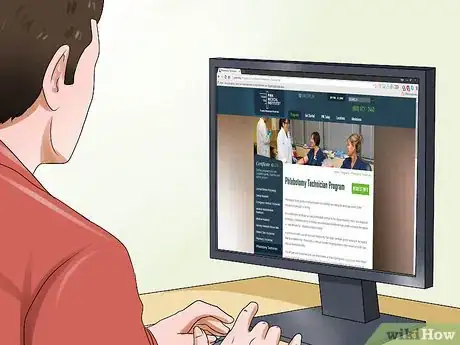


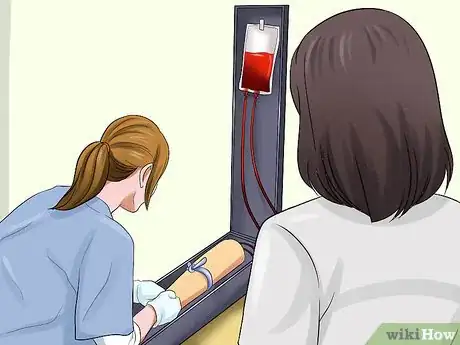
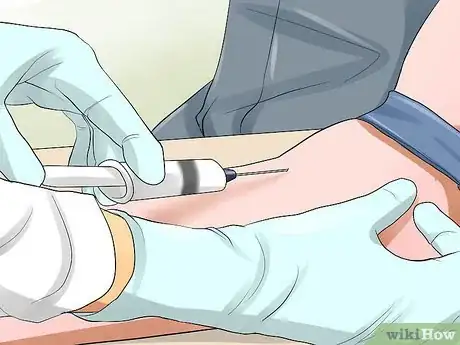

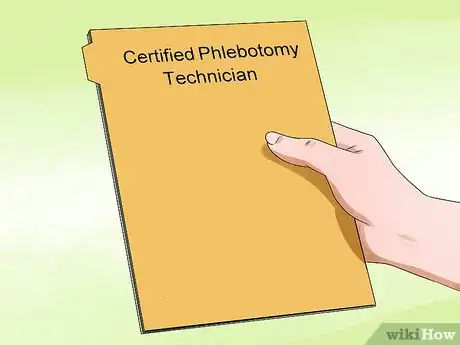






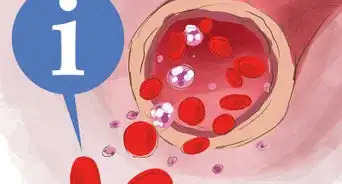

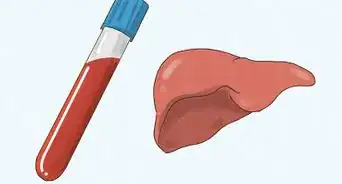



-Step-14-Version-2.webp)

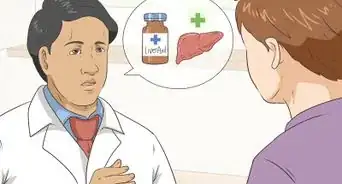













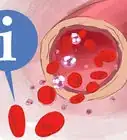




































Medical Disclaimer
The content of this article is not intended to be a substitute for professional medical advice, examination, diagnosis, or treatment. You should always contact your doctor or other qualified healthcare professional before starting, changing, or stopping any kind of health treatment.
Read More...